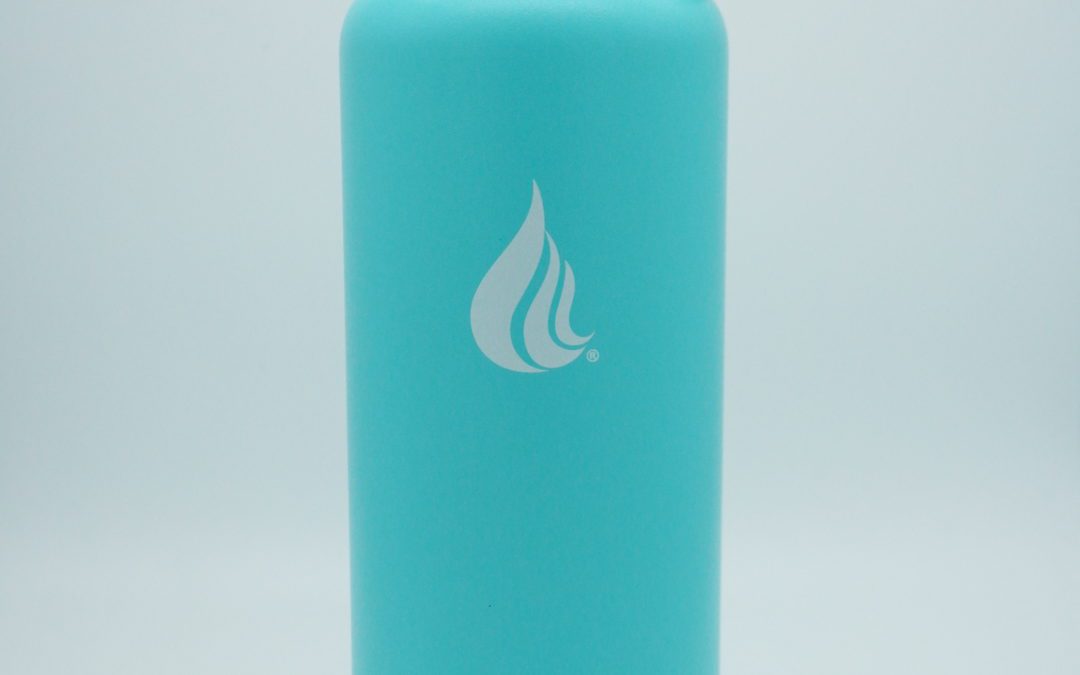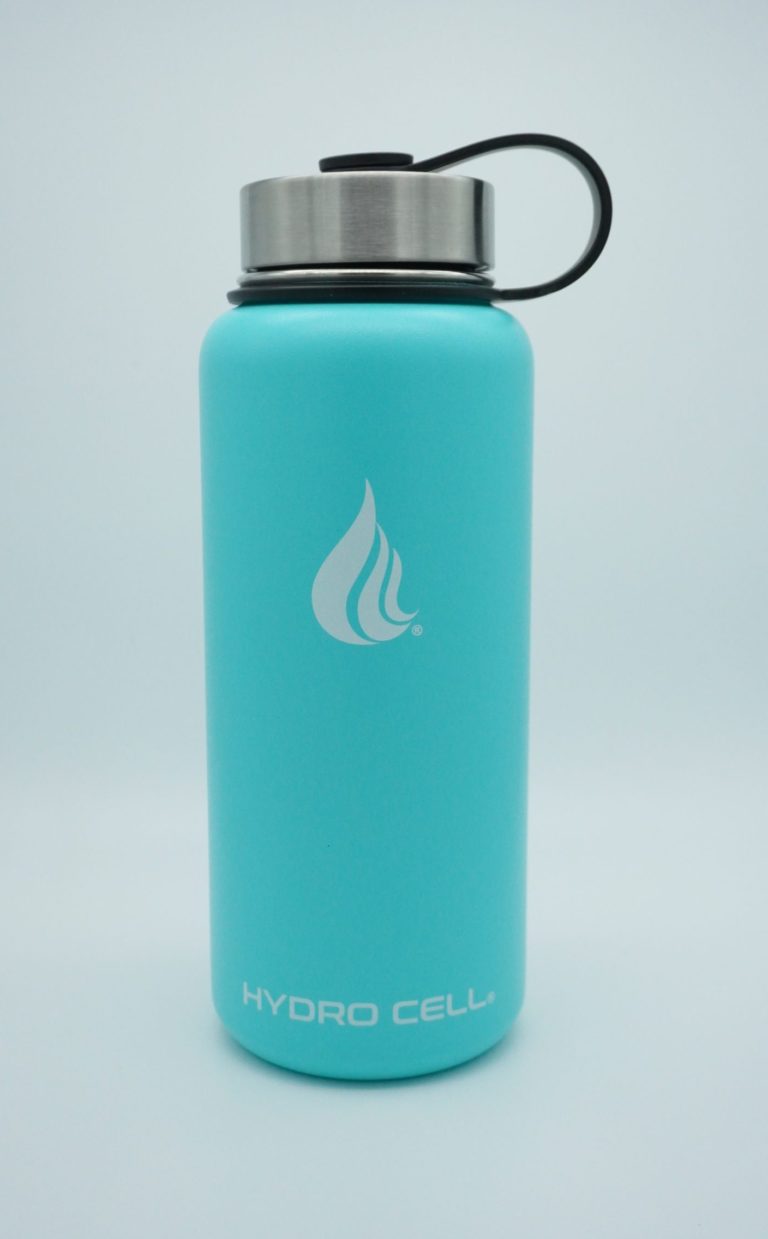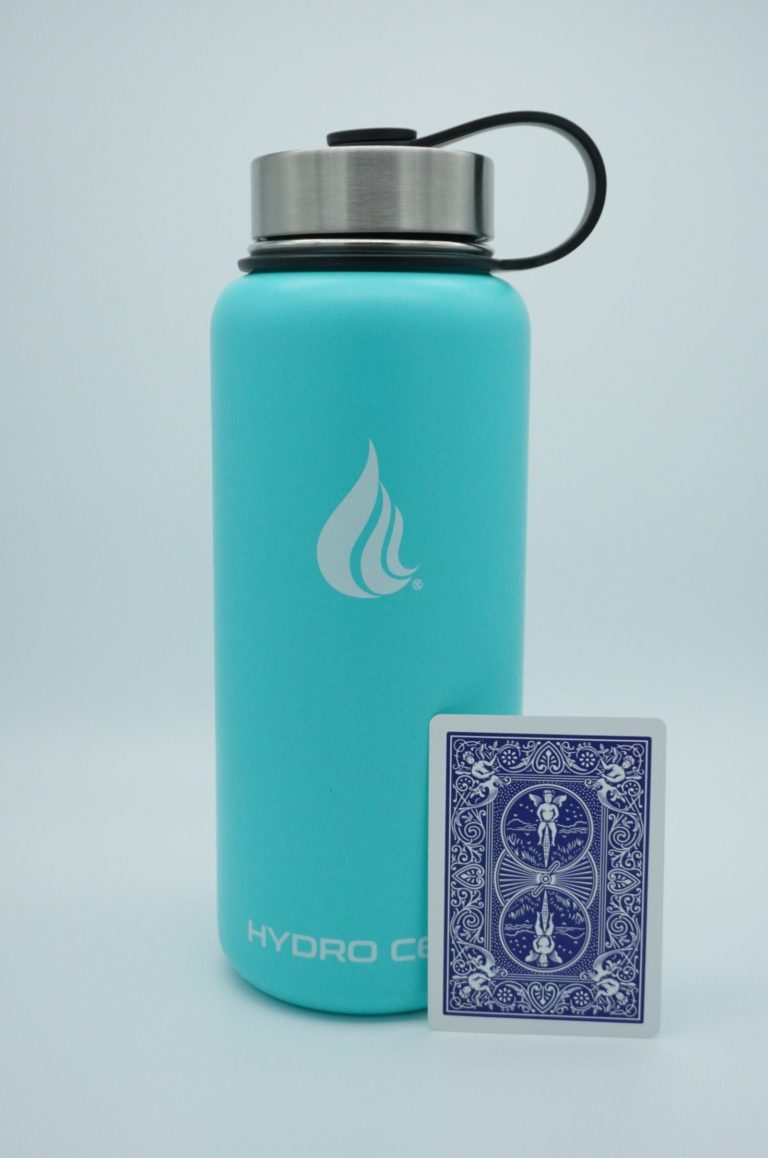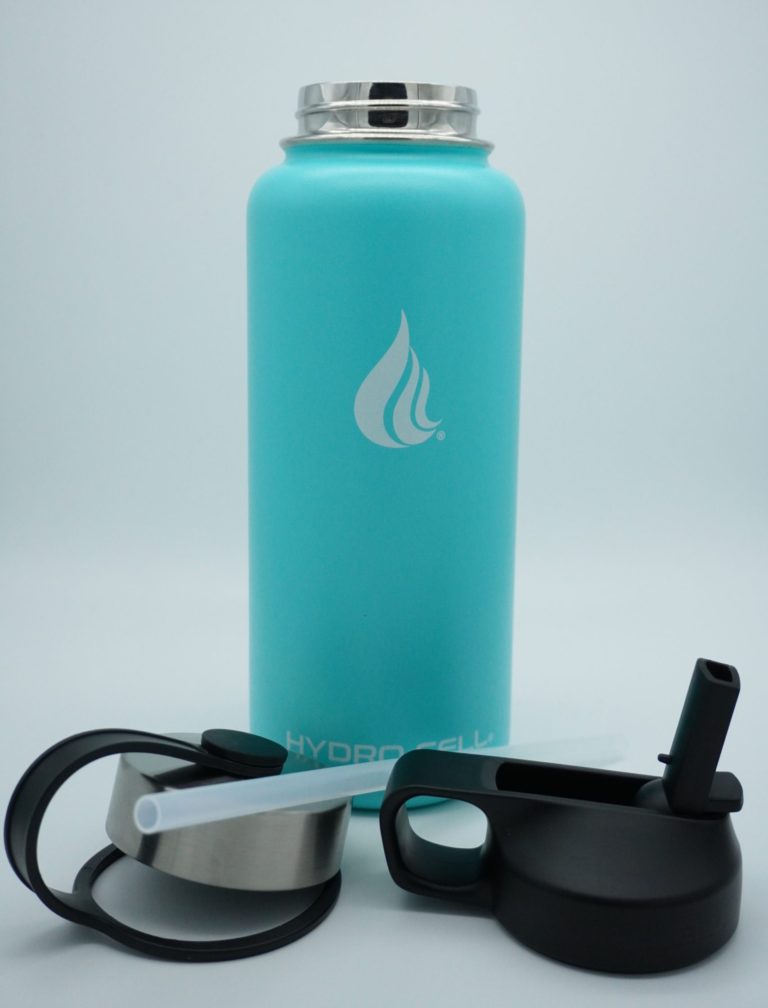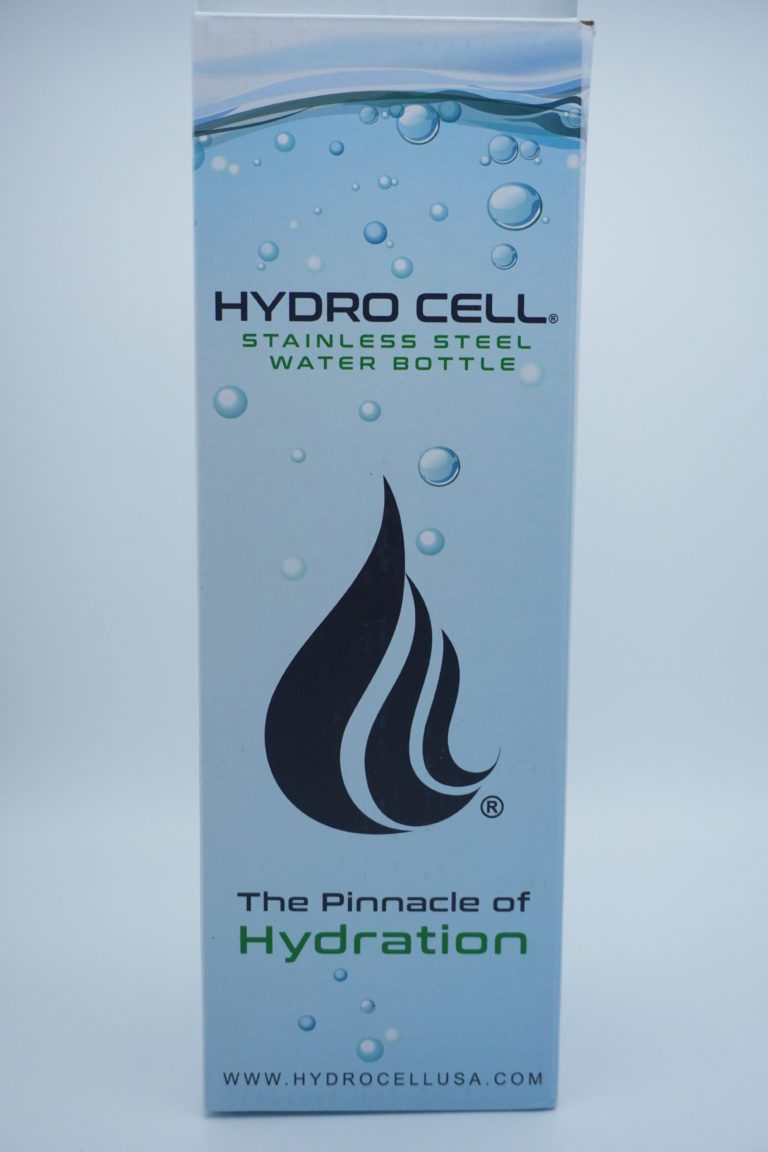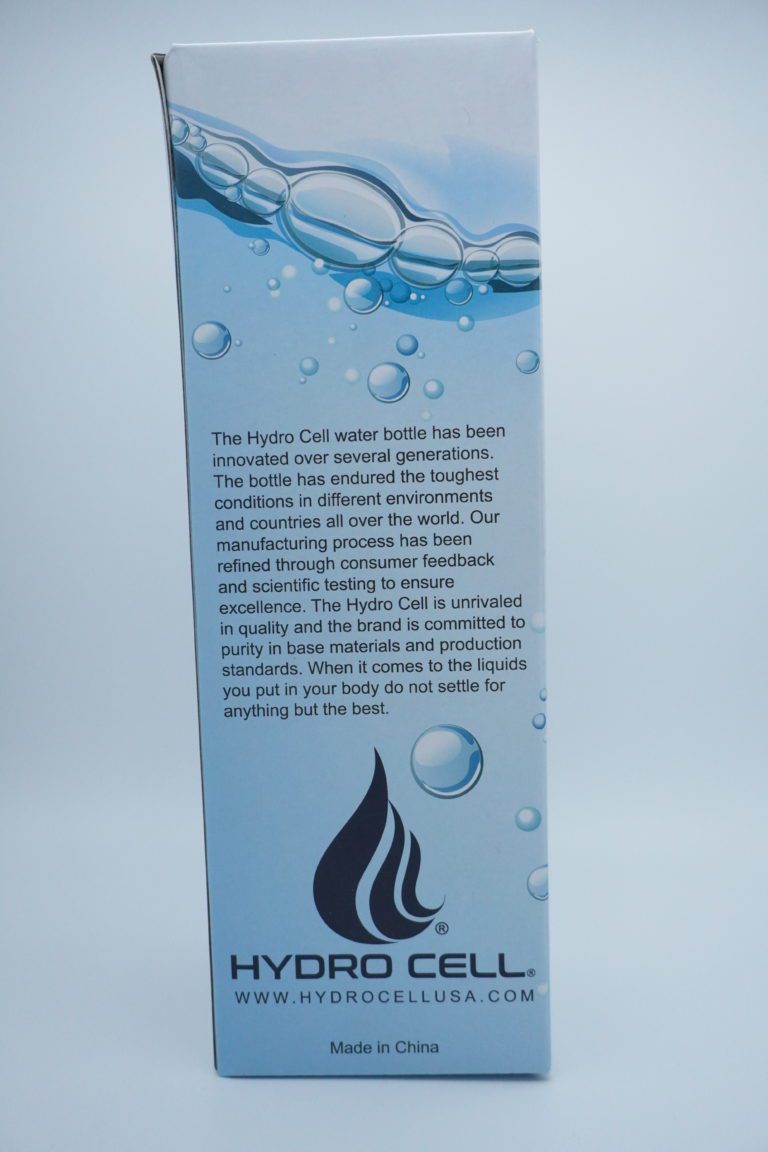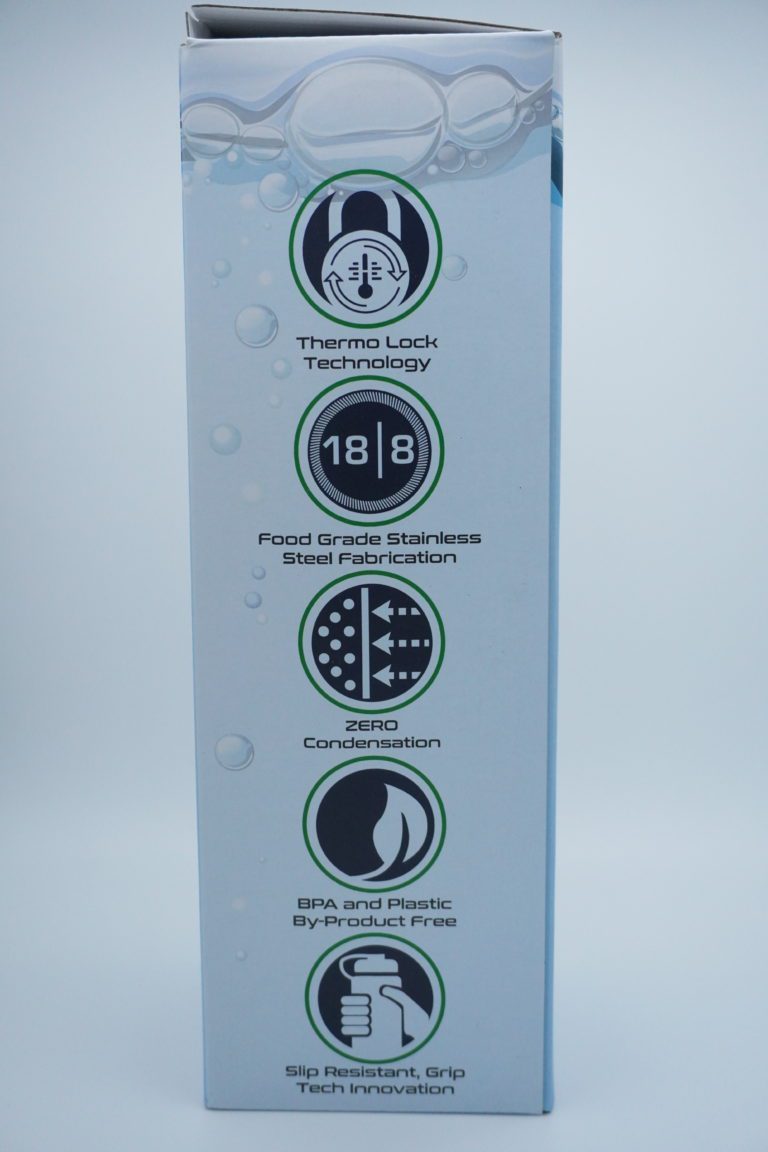Overall Score
- Ease of Use 75%
- Durability 85%
- Seal 90%
- Maintenance 70%
- Insulation 90%
Key Takeaways
Intuitive Design
Easy to use and carry.
Surprisingly Lightweight
One of the lighest insulated stainless steel bottles on the market.
Longer Cleaning Times
A bottle brush is recommended to reach the inside walls because it is not dishwasher safe.
no sweat
changeable tops
Interested in Buying?
Overview
Hydro Cell strikes an impressive balance of volume, weight and insulation that make it an attractive water bottle at a very reasonable price. At first glance, this bottle seemed to be identical to many other insulated water bottles we’ve reviewed but after a few days in the hand’s of our reviewers, they found there was much more to the Hydro Cell. While it is double walled and vacuum sealed, the total wall depth is significantly thinner than other brands, dramatically improving its weight to capacity ratio. Our reviewers were surprised when they first opened the bottle and saw how much room there was for liquid after getting use to the Yeti Rambler. The biggest downside to this bottle, which is shared with many other insulated bottles is that it cannot be cleaned in the dishwasher.
From a health perspective, Hydro Cell bottles are advertised as having BPA free parts and use 18/8 virgin (new) stainless steel. We were not aware there were risks in using recycled steel in water bottles and could not find any supporting evidence, but will take them at their word.
Visually, Hydro Cell bottles do not stand out from other comparable insulated bottles but there were some nice design touches that our reviewers appreciated. Hydro Cell offers an impressive array of colors, 15 in total, with an emphasis on pastels and brighter colors. They use a polished stainless steel top that contrasts nicely with many of their color options. The white logo is not obtrusive and blends in with the aesthetic of the bottle.
We confirmed that Hydro Cell is a US based company, but we didn’t find much background on who they are or how they got started. Based on the date they were first available on Amazon (2/13/2021), we suspect they are a new company trying to fill a previously underserved niche in the reusable water bottle market. We appreciate their unique offerings and think they make a bottle worth considering.
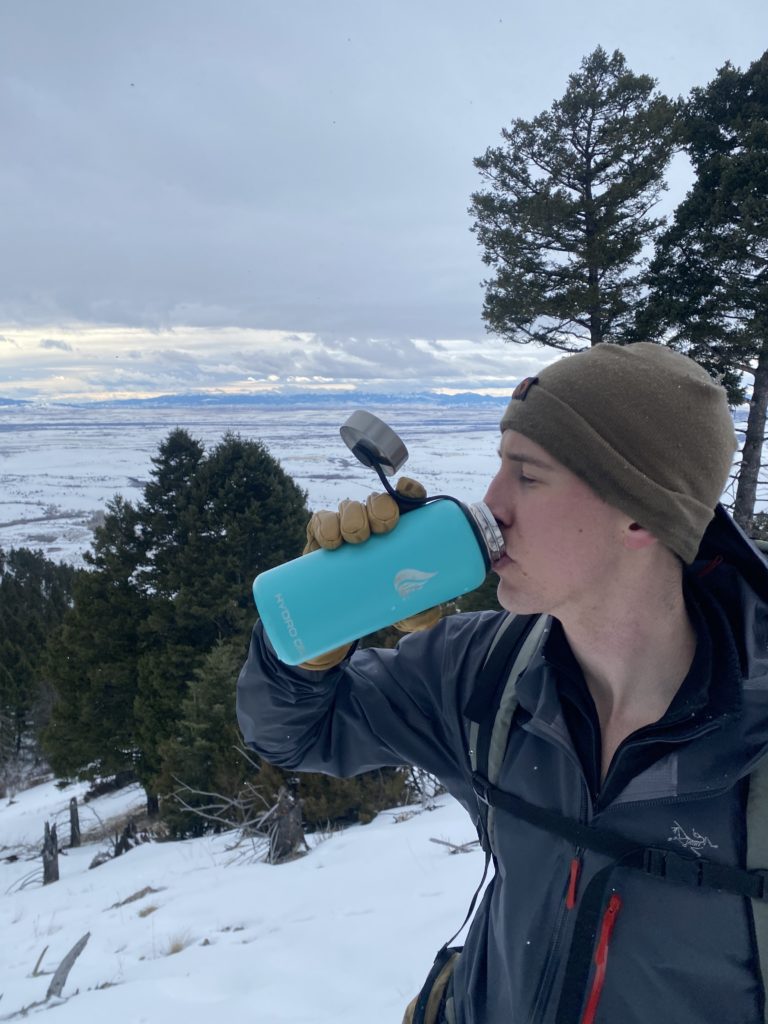
The Hydro Flask insulates 32oz of water without extraneous weight, making it appropriate for carrying over longer distances.
Ease of Use
Reviewers tested the bottle while hiking, backpacking and canoeing, finding it was a natural fit for all these activities. The first test was a multi-day summer canoe trip through the Missouri Breaks in Montana, one of the most remote and rugged rivers in the lower 48. Mid-July in Eastern Montana can be brutally hot, and the conditions on this trip were no exception. The mercury reached triple digits by noon and the water in the plastic bottles grew warm and acquired an unpleasant plastic taste. Drinking out of the plastic containers became a chore. The Hydro Cell on the other hand kept its contents cold and refreshing for the entire day.
The Yeti Rambler was also tested on the canoe trip, and while a high performing bottle, the Yeti became hot to the touch when in direct sun. The Hydro Cell on the other hand had a powder coating which prevented the bottle surface from heating up and kept it safe to handle. These qualities made it a favorite for use in the extreme cold as well. When temperatures are below freezing, water in a single walled bottle will freeze and become unusable. The same insulation that keeps the water cold in the summer will keep it warm in the winter (as long as it is filled with warm or hot water).
Due to it’s relatively light weight, the Hydro Cell was a top pick for hiking as well. When conditions called for an insulated bottle on the trail, our reviewers recommend this bottle. Other insulated bottles tested were significantly heavier and had less capacity. For these reasons, it was our top pick as “Best Water Bottle For Hiking in Extreme Temperatures”.
For a 32oz bottle, it was easy to open and close but generally requires two hands. The 24oz model might be more appropriate if one handed operation is important.
One notable distinction is the Hydro Cell mouth wall is much thinner than other insulated bottles which can take some getting used to- the mouth is essentially single walled. This is probably how the designers were able to shed some weight but some reviewers reported that drinking out of it felt awkward at first if they were used to a double walled bottle. Eventually though, those reviewers who were reticent at first became comfortable with the design after several days of consistent use.
Hydro Cell comes with a standard stainless steel cap and an additional “sport cap” which is a plastic lid with a flip up straw. The plastic lid is similar to many other bottles and generally our reviewers who carried the bottles in their backpacks avoided it out of concern for leaks and additional plastic exposure. The standard cap is well made and as a bonus, includes insulation underneath to improve temperature retention. The tether on the cap can be a little awkward when placing the cap back on the bottle but it did not present any serious issues for the users.
Overall, user experience with the Hydro Cell is positive and there were very few issues to call out.
Durability
The Hydro Cell performed well when carried on hiking and canoe trips. Accidental falls from several feet did not result in significant dents. The powder coating scratched after being dropped, but reviewers did not notice any scratches or discoloration from normal use. The cap and tether are both sturdy and our reviewers did not have any issues with those parts after continued use.

The Hydro Cell was the perfect companion for a strenuous winter hike.
Seal
The Hydro Cell did not leak at all during testing and reviewers found it easy to tighten the lid with the threads aligned. There were also no issues reported with tightening the screw cap. This bottle is ready to be packed in a backpack or left in the car without any concerns about leaks.
Maintenance
The HydrationReview team agreed that the maintenance was the biggest drawback of the Hydro Cell. The bottle requires hand washing which turned out to be a mixed experience. Its wide mouth and spacious interior make cleaning the bottle generally easy but there are crevices between the wall of the cap and the insulation that are challenging to access, especially when an electrolyte mix leaves residue. On several occasions reviews used different electrolyte powders in the bottle for several days at a time and it took multiple washings to remove the lingering taste.
Insulation
Hydro Cell delivered some of the most impressive insulation results of any bottle that was tested at HydrationReview and was scored accordingly. Over the course of eight hours, the temperature of the water only gained 6°F. That means that over a work day, the water can be expected to stay at a comfortable drinking temperature the entire time. When loaded with ice and placed in direct sun light on the first day of a canoe trip, the contents stayed cool until nightfall.
Please keep in mind that the temperature test was conducted with the standard, insulated cap and it will not perform as well with the straw “sport cap.”
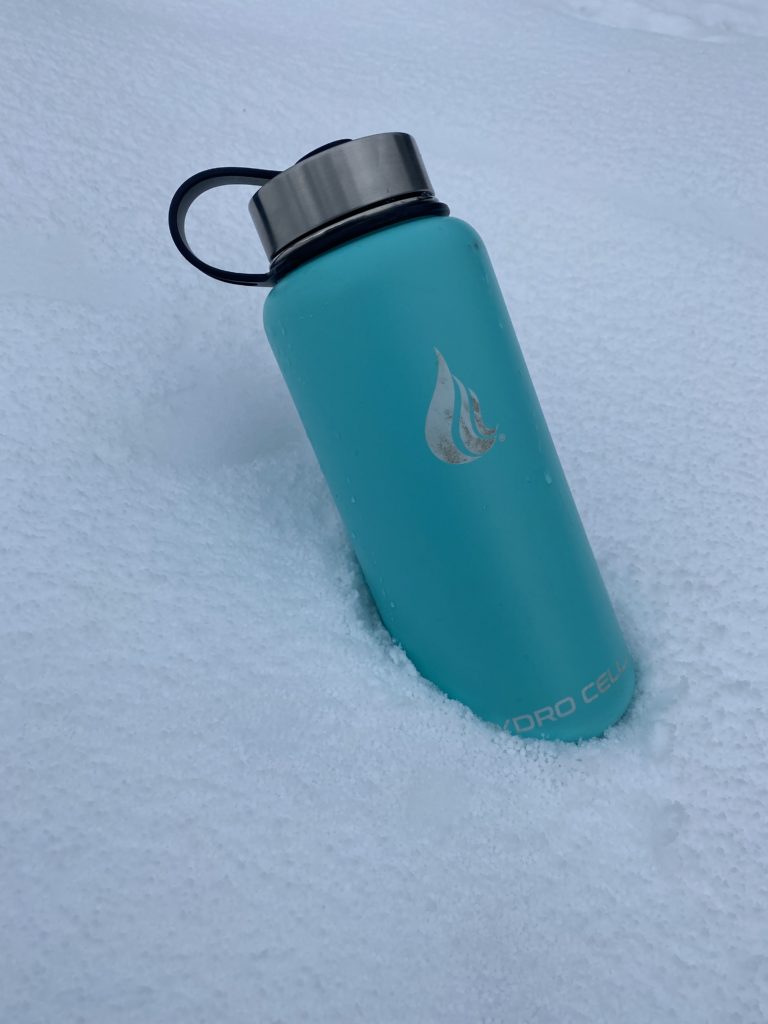
The Hydro Cell moderates the temperature of the bottle’s contents, keeping hot water warm and cold water cool.
Interested in Buying?
Go Deeper
Related Reviews
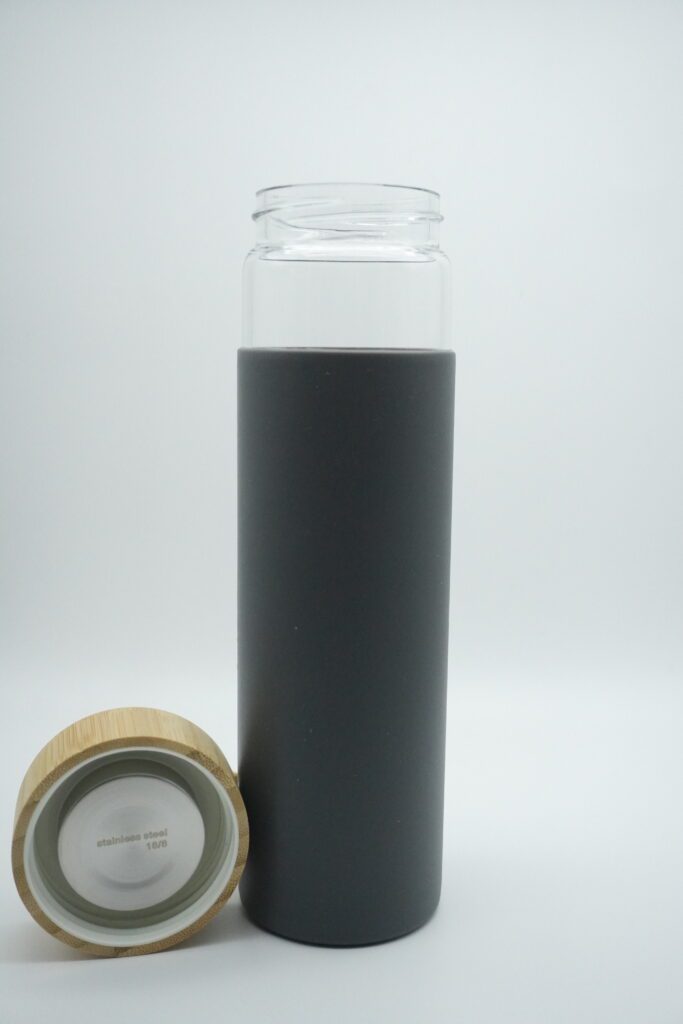
Yomious Water Bottles Review
A lightweight glass bottle great for around the house or office.
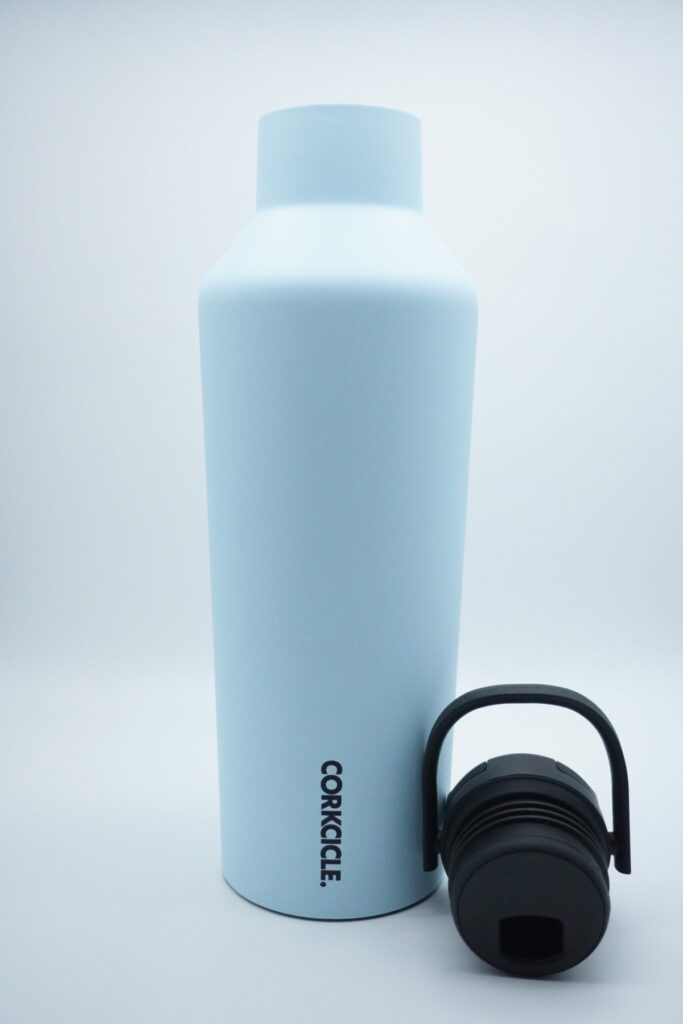
Corkcicle Sport Canteen Water Bottle Review
A surprisingly functional bottle with a number of unique features that actually work.
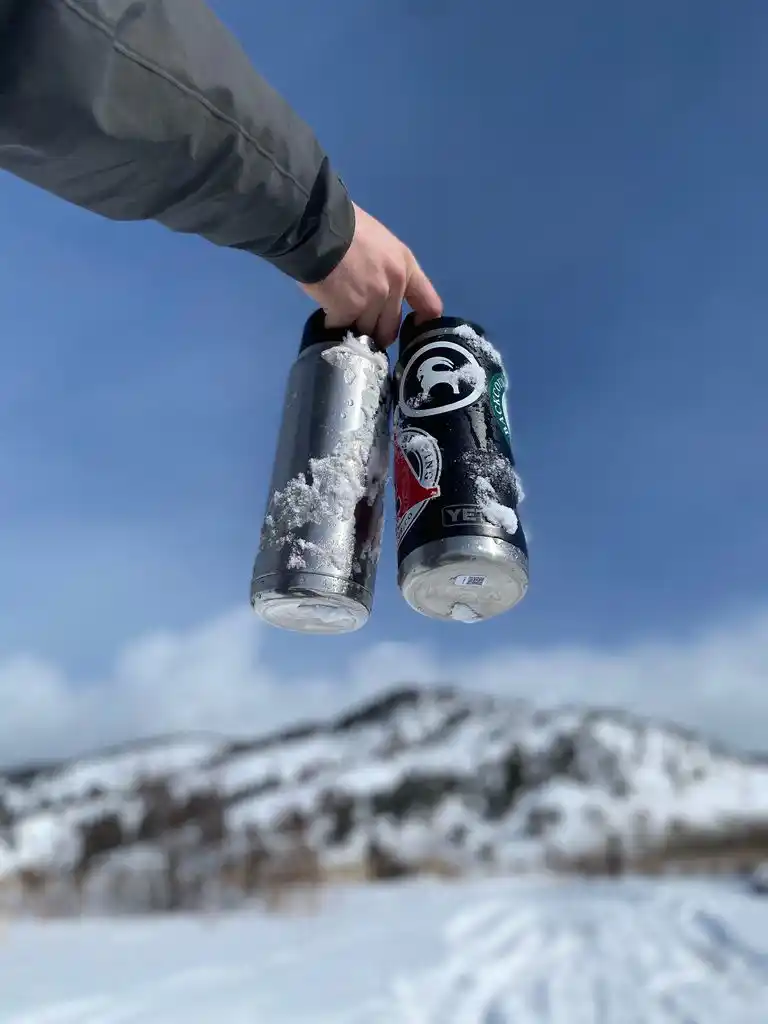
Yeti Rambler Water Bottle Review
A classic water bottle that deserves its reputation as a hard working and functional.
Stay Updated (and Hydrated)

